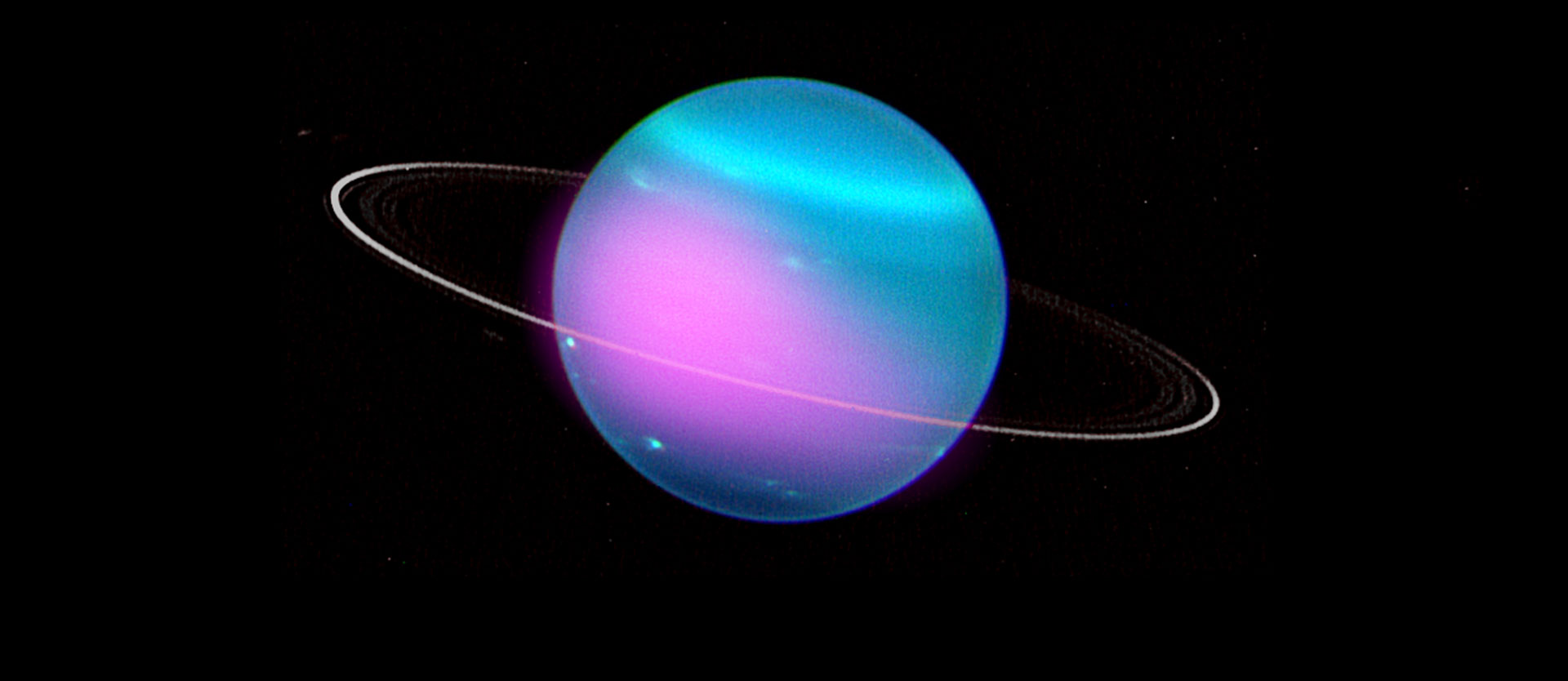
X-Ray light from Uranus

Astronomists are keeping an eye on Uranus. The seventh planet of our sun system seems to be sending out x-rays. The phenomenon was first noticed by astronomists in 2002. Only now they have proof of it because they were able, for the first time in 2017, to register another flare up of the radiation. The data collected with the x-ray telescope ‘Chandra’ has now been evaluated.
What could be the reason for Uranus to emit x-rays? So far, the suspicion is: the sun. Scientists have found out that both Jupiter and Saturn diffuse the x-ray-light emitted by the sun, similarly to earth’s atmosphere diffusing the light of the sun. While the authors of the new Uranus study initially thought that the major part of the discovered x-ray-radiation was equally caused by the diffusion, there is new evidence that there is at least one other source for the x-ray light. If further observations prove this theory, this could have an impact on our understanding of planet Uranus.
One explanation might be that the rings around Uranus themselves are responsible for emitting the x-rays, as in the case of Saturn. Uranus almost exclusively consists of hydrogen and helium and is surrounded by charged particles like electrons and protons. When these particles collide with the rings, they might cause the circles radiate Another possibility might be that at least part of the x-rays stem from the polar lights on Uranus, a phenomenon, that is also found on earth.
On earth, we can see colorful light spectacles in the pole regions of the planet. These light phenomena arise when highly energetic particles interact with the atmosphere. More specifically, they are caused by energetic electrons that have wandered through the planet’s magnetic field line and have been slowed down by the atmosphere. Jupiter has polar lights, too. The x-rays of the polar lights on Jupiter stem from two sources: electrons that move along magnetic field lines, just as on earth, and positively charged atoms and molecules that rain down in Jupiter’s polar regions. However, scientists are less certain about the polar lights on Uranus. The observations by Chandra might help solve this puzzle.
Uranus is a particularly interesting subject for x-ray studies because of the unusual positioning of its rotational axis and its magnetic field. While the rotational magnetic field axes of other planets in our sun system are basically perpendicular to the level of the sun orbit, the rotational axis of Uranus is nearly parallel to its orbit around the sun. In addition, Uranus is tilted to one side, but its magnetic field is positioned away from the center of the planet. This could mean that its polar lights are unusually complex and variable. The discovery of the sources of the radiation on Uranus could help astronomists to understand how more exotic objects, such as black holes and neutron stars, are sending out radiation.
Original publication:
W. R. Dunn et al.
A Low Signal Detection of X-Rays from Uranus
Advancing Earth and Space Science
Doi: 10.1029/2020JA028739












